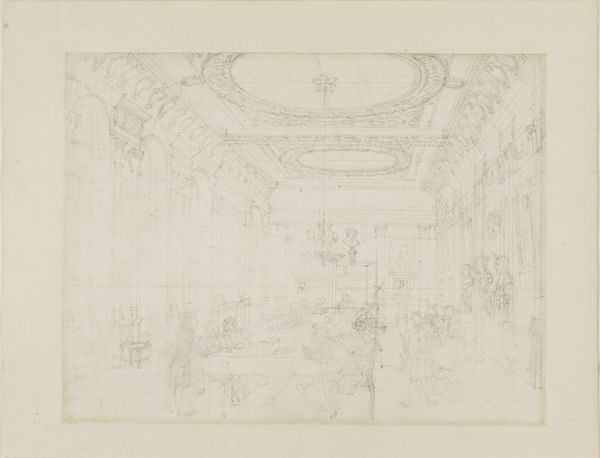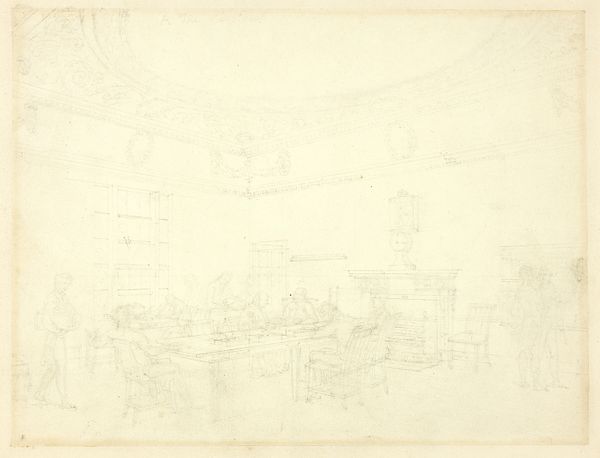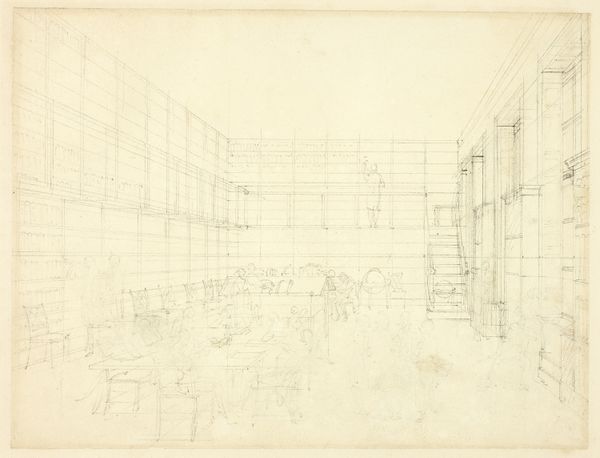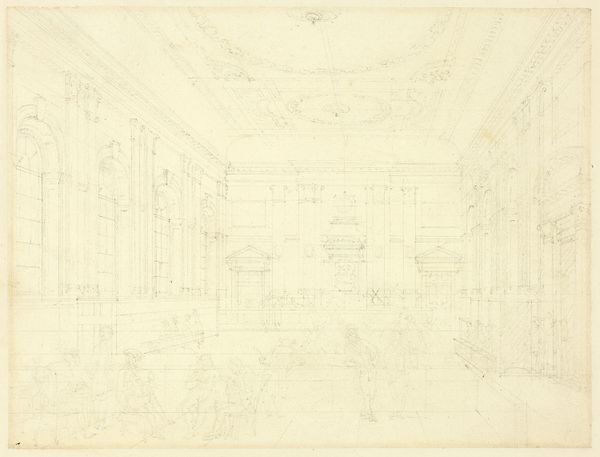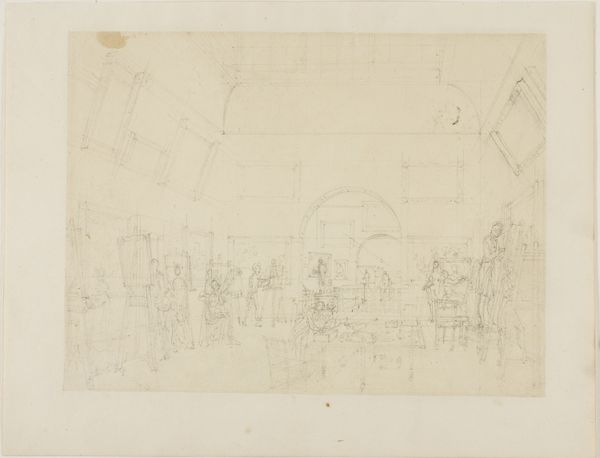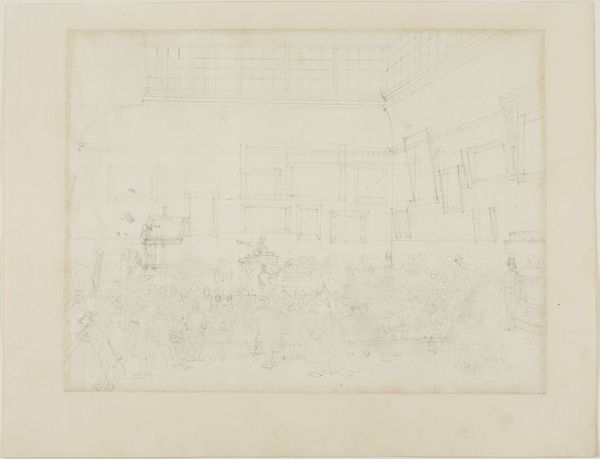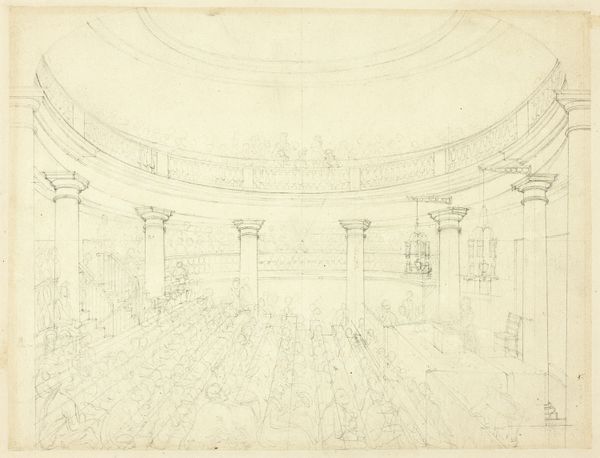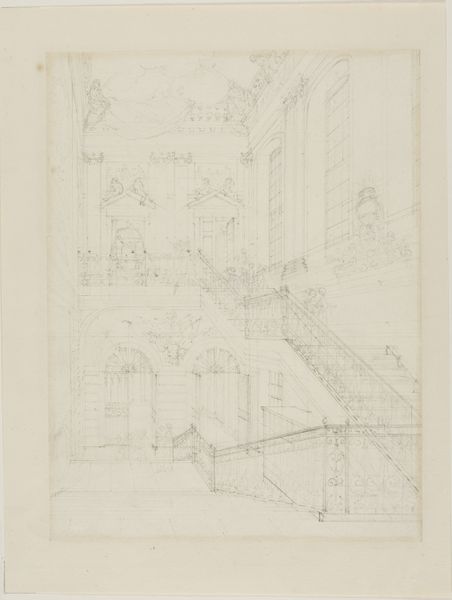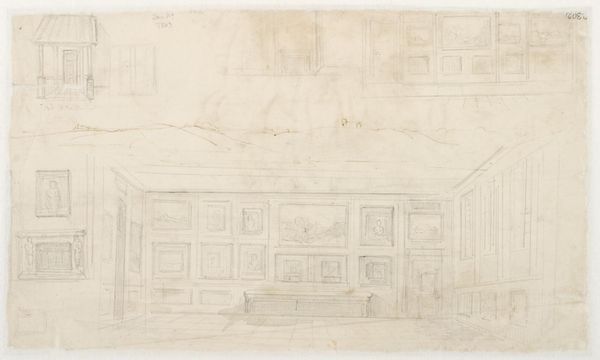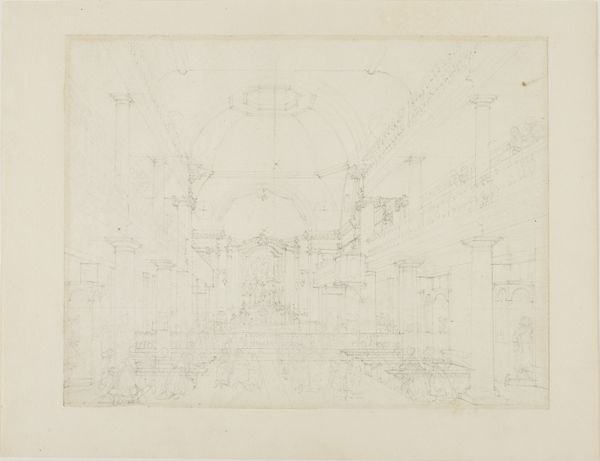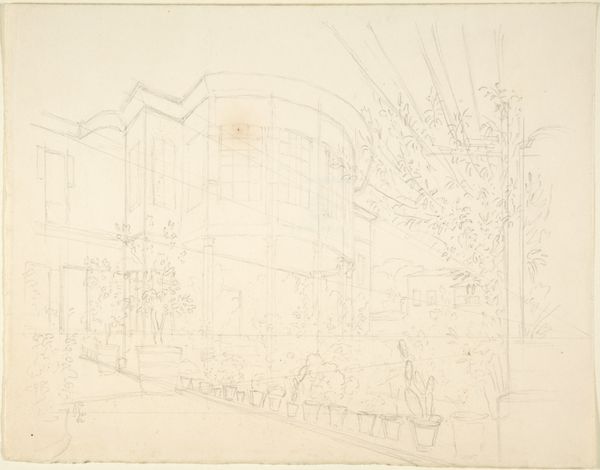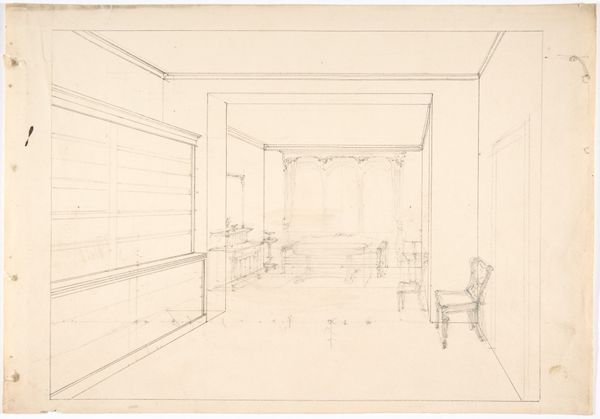
Study for the Great Hall, Bank of England c. 1808
0:00
0:00
drawing, print, etching, paper, graphite
#
drawing
# print
#
etching
#
etching
#
paper
#
form
#
architectural drawing
#
line
#
graphite
#
cityscape
Dimensions: 196 × 260 mm
Copyright: Public Domain
Curator: Look at this delicate rendering by Augustus Charles Pugin, titled "Study for the Great Hall, Bank of England," dating from around 1808. Executed in graphite, etching, and print on paper, it presents a vision of financial power and civic life. Editor: My first impression is one of ghostly elegance. The faint lines almost vibrate, capturing a bustling energy despite the ethereal quality. The composition emphasizes the grandeur of the space. Curator: The architecture indeed conveys a specific message. During this period, the Bank of England was a potent symbol of British economic stability and global influence. Consider the weight that this building, even in sketch form, carried. How does the use of light and line speak to that? Editor: The sparseness reinforces a sense of immutable order. The columns, arches, and the figures rendered as mere suggestion create an effect that suggests both permanence and the flow of activity—the pulse of commerce visualized. There's an almost neoclassical austerity about the lines. Curator: Absolutely, the neoclassical style evokes the authority of ancient empires, mirroring the ambition of the British Empire at its peak. But how do we reconcile the precision of the architectural design with the indistinct depiction of the people within the hall? Does that elision speak to the nature of finance as something abstract? Editor: That’s an astute question. The architectural precision dwarfs the indistinct crowd, hinting at the individual being somewhat subsumed within the larger institution, the system itself. Perhaps, their individual identities become less significant than their collective function within this powerful place. It also speaks to our human smallness compared to financial might. Curator: So the image invites us to question the relationship between the individual and the institution? The Bank of England represents economic structure but also power dynamics. Editor: Precisely. Pugin’s choice of medium echoes the period’s understanding of societal order and subtly asks us how individuals negotiate within this powerful landscape. The Bank is no less symbolic now. Curator: Reflecting on it, it is still intriguing how effectively Pugin, even with the sketch-like approach, captured the cultural and political significance of the space, underscoring how symbolic meanings can be encoded in both grand architecture and seemingly casual details. Editor: It proves again how seemingly straightforward artwork can, upon closer examination, offer complex insight into historical context and enduring power dynamics represented through symbols.
Comments
No comments
Be the first to comment and join the conversation on the ultimate creative platform.

